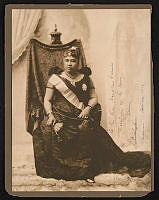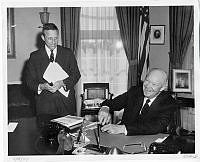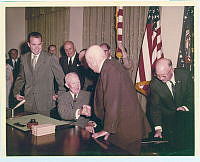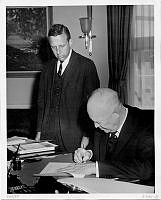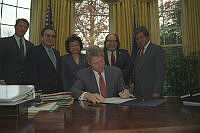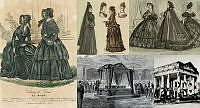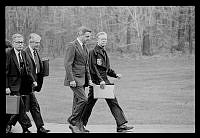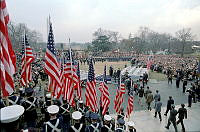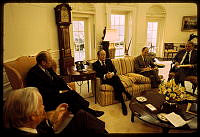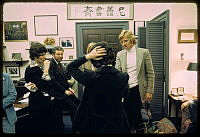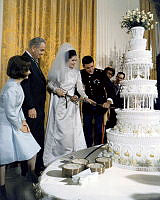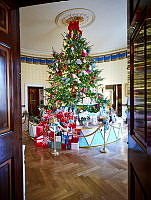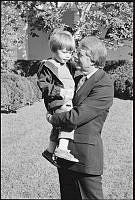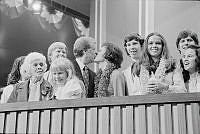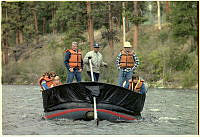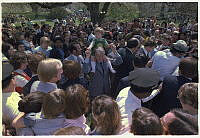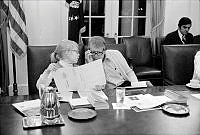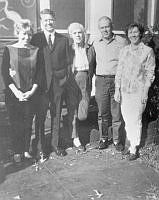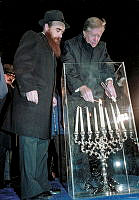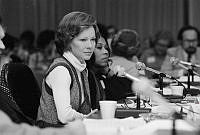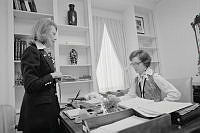The White House State Dinner
Copyright © White House Historical Association. All rights reserved under international copyright conventions. No part of this article may be reproduced or utilized in any form or by any means, electronic or mechanical, including photocopying, recording, or by any information storage and retrieval system, without permission in writing from the publisher. Requests for reprint permissions should be addressed to books@whha.org
A state dinner honoring a visiting head of government or reigning monarch is one of the grandest and most glamorous of White House affairs. It is part of an official state visit and provides the president and first lady the opportunity to honor the visiting head of state and his or her spouse. It is a courtesy, an expression of good will, and a way of extending hospitality. It brings to mind the tradition of breaking bread with friends to seal a friendship. It is an event that also showcases global power and influence. The traditional toasts exchanged by the two leaders at the dinner offer an important and appropriate platform for the continuation of the serious dialogue that has taken place earlier in the day.
In the early nineteenth century dinners honoring the president's cabinet, Congress or other dignitaries were called state dinners even though they lacked official foreign representation. At that time, Washington society was made up of resident officials, a small circle of citizens and occasionally the families of a few senators and representatives. The city was a collection of isolated villages widely separated and at times almost inaccessible. Under such conditions, large receptions and dinners were a rare occurrence.

President John F. Kennedy and First Lady Jacqueline Kennedy host a State Dinner at the White House in honor of Prime Minister Jawaharlal Nehru and his daughter Indira Gandhi of India, November 7, 1961.
John F. Kennedy Presidential Library and Museum/NARATimes changed and so did the nation's capital. During the nineteenth century, a series of "state dinners" were held every winter social season to honor Congress, the Supreme Court, and members of the diplomatic community. In recent times, the term "State Dinner" has come to mean more specifically a dinner hosted by the president honoring a foreign head of state as the guest of honor. The first ruling monarch to attend a State Dinner at the White House was King Kalakaua of Hawai'i, hosted by President Ulysses S. Grant and First Lady Julia Grant on December 22, 1874.
The restoration of the White House in 1902 brought with it a more appropriate setting for the nation's official entertaining. Moving of the president's office to the newly constructed West Wing and the Neoclassical remodeling of the mansion's state rooms gave Theodore Roosevelt a perfect setting reflecting America's growing power and influence. The World War I years saw few and simple dinners at the Woodrow Wilson White House. Even the traditional New Year's reception was called off in 1918. World War II State Dinners were conducted as usual, only with simpler food. Franklin Roosevelt abandoned the "made list" (a core of guests distributed among social events), thus making room for guests invited for a purpose other than social. While the White House underwent a complete interior reconstruction from 1948 to 1952, Harry S. Truman lived at Blair House and State Dinners took place in local hotels.

President Grover Cleveland and First Lady Frances Cleveland host a state dinner at the White House for the Diplomatic Corps, January 24, 1889.
White House Collection/White House Historical AssociationTo this day, presidents and first ladies continue to set the tone of their administration's entertainment. The first lady and her staff are responsible for the elaborate planning and attention behind the glitter and ceremony of the state dinner. These formal dinners involve the creation of invitations and guest lists, menus, flowers, table settings, seating arrangements, and entertainment for the evening. The first lady works closely with her social secretary, the executive residence staff, and the Department of State to coordinate every detail of this very special event.
The Coveted Invitation
Behind the festive exterior of the social scene, the important business of government goes on—information is gathered, opinions are exchanged, powerful connections are made, and appearances are upheld. For these reasons, White House invitations are the most important and the most sought after in the nation's social whirl.
The Guest List
"When putting together a guest list for the approval of the President and First Lady, you had to be sure to invite people who should be invited, soothe those who are not invited but think they should be invited and don't invite people who should not be invited." Sally Quinn, The Washington Post, October 1975
The State Dining Room seats 120 people and must accommodate the official party and an equal number of administration people, leaving space for 40 couples — not many when you consider people who should be invited as well as people who would make for an interesting and entertaining evening.

Guests seated with President George H. W. Bush and Queen Elizabeth II at a State Dinner held in the Queen's honor on May 14, 1991.
George Bush Presidential Library and Museum/NARAThe Seating
In Washington, protocol is a measure of power and taken very seriously. Who was seated at the President's table or at the First Lady's table—and why?
Round tables have become the accepted mores of most state dinners, enabling the hosts to break away from the strict rules of protocol found in a formal seating arrangement. It also makes it possible to have an interesting and diverse group at each table.
The Entertainment
American artists have performed at the White House for more than two-hundred years, and the showcase performances have often reflected the musical tastes of first families or their guests. The Marine Band has been a presence at the President's House since it first played for President John Adams and First Lady Abigail Adams's New Years Day reception in 1801.













